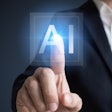Before that steam drill shall beat me down,
I'll die with my hammer in my hand.
-- The Ballad of John Henry
Echoing technology battles waged long ago, the adoption of speech recognition (SR) systems in place of conventional dictation has provoked strong objections among some radiologists.
Foremost among their concerns is the idea that implementing an SR system will necessarily slow throughput and add to an already overburdened workday, if only temporarily. On the front end of the workflow cycle, radiologists will need to train the technology to recognize their voice; on the back end, they will have to spend more time editing and correcting their reports. This resulting slowdown, they believe, could even exacerbate the backlog of work.
But in a teaching-hospital setting, having residents and fellows in the reading room labor pool helps to mitigate the costs of adopting SR technology, according to a presentation at the 2004 Healthcare Information and Management Systems Society (HIMSS) conference in Orlando, FL.
"At an academic institution the cost of speech recognition systems, as well as transcriptionists, is usually borne by the hospital," said Rania Omar, a consultant with Radiology Consulting Group in Boston. Staff radiologists are supported by residents and fellows, resulting in a kind of cushion between the staff and the system. And, she added, their salaries are not usually based on volume.
"I would argue that in an academic environment, (SR) is really a win-win for the hospital," said Omar, who reviewed the implementation of SR systems versus conventional dictation at Massachusetts General Hospital (MGH).
In support of her assertion, Omar offered up an analysis of residents, fellows, staff radiologists, and transcriptionists/correctionists at the Boston-based hospital. Calculations were based on an 11-hour workday over a 250-workday year, yielding 165,000 work-minutes annually. She then factored in the average annual salaries of residents ($50,000), clinical fellows ($60,000), staff radiologists ($235,000), and transcriptionists/correctionists ($23,500).
With these numbers, Omar determined the cost per minute of residents to be 30¢, fellows 36¢, staff $1.42, and transcriptionists/correctionists 14¢. Omar then took these values and applied them to a simple formula that dictation time (D) plus edit time (E) equals report turnaround time (RTT). She then compared the RTT of both SR and transcription under several scenarios.
"The number one objection that I get when I do (SR) training is: 'You're telling me that it's cheaper to have me do my edits than it is to keep a transcriptionist on (versus) the amount of money that it's costing to have me here?'
"I tell them that, yes, when you look at how quickly you can get reports through and the fact that you're going to have to look at the reports again anyway; you might as well look at the reports now and remove that bottleneck altogether," Omar said.
In the course of a single workday by a single radiologist, Omar said she saw instances in which the dictation time and edit time was equal between transcriptionist and the SR system, faster with the SR system than with the transcriptionist, and slower with the SR system compared with the transcriptionist.
A number of factors can affect SR throughput, including complex cases such as neuroradiology reads compared to standard chest films using macros, network loads on the RIS/PACS, and system stability, Omar said.
Omar posited that SR corrections and edits could add up to 40 minutes extra per day to the radiologist workload at MGH, under mixed-case scenarios. On a per-day basis, this time cost was $12 for a resident, $14.40 for a fellow, and $56.80 for a staff radiologist. On an annual basis, this worked out to $3,000 for a resident, $3,600 for a fellow, and $14,200 for staff.
The academic institution is already paying the salaries of residents, fellows, and staff, so it doesn't make sense for it to pay $23,500 annually for a transcriptionist if it doesn't have to, Omar said.
"We have not even begun to delve into the different scenarios that occur on a daily basis to look at where we could be gaining time. We have gained report turnaround time, we have improved that dramatically, but maybe we can improve it more," she said.
By Jonathan S. BatchelorAuntMinnie.com staff writer
April 23, 2004
Related Reading
Machine language: Radiologist offers tips on optimizing speech recognition, February 4, 2004
Adding the human touch to speech recognition, August 8, 2003
RIS/PACS integration brings productivity, efficiency gains, July 22, 2003
Voice recognition reduces report turnaround time in Vienna facility, December 5, 2002
Speech recognition, structured reporting eyed for efficiency gains, March 16, 2002
Copyright © 2004 AuntMinnie.com


















